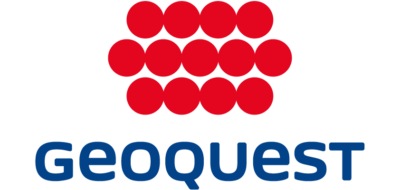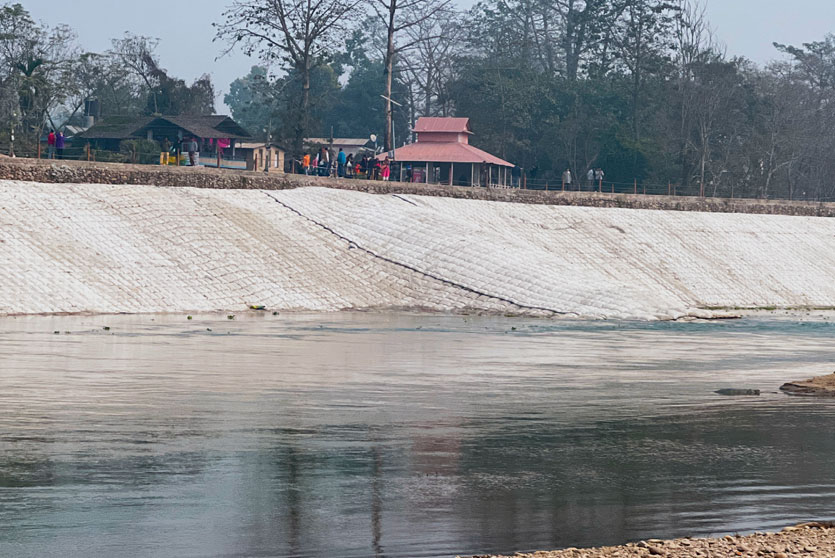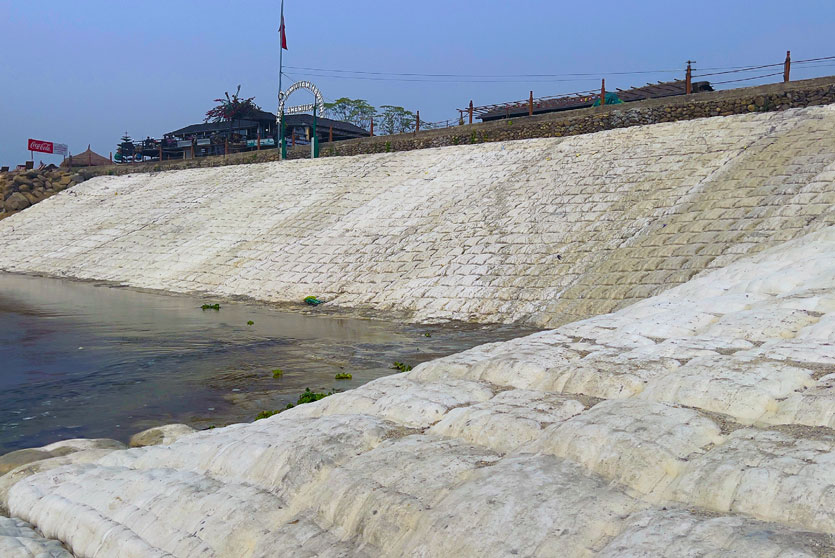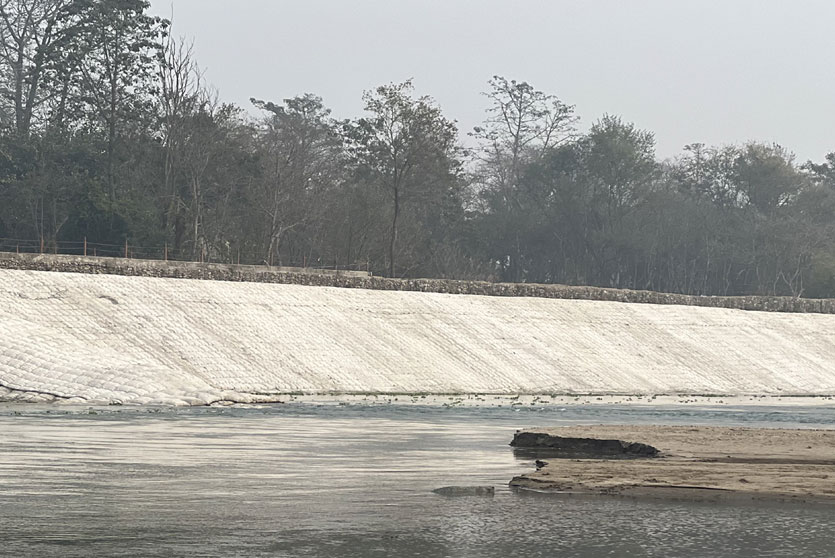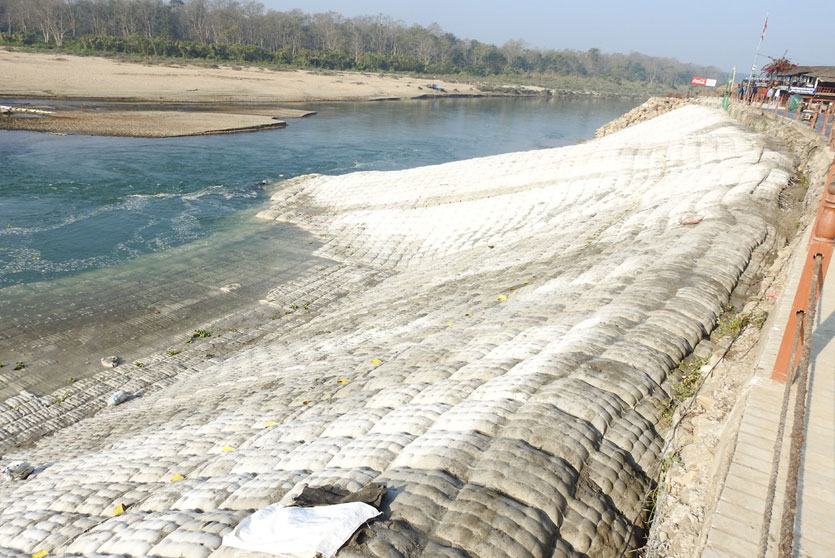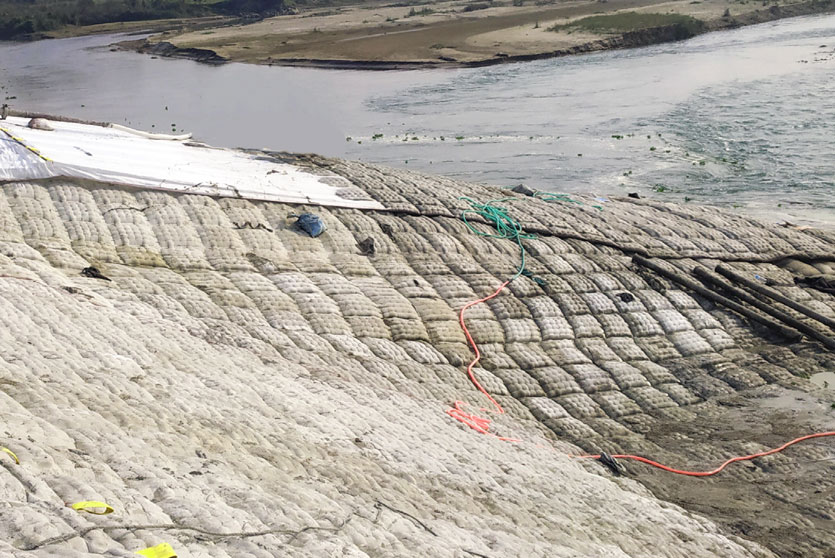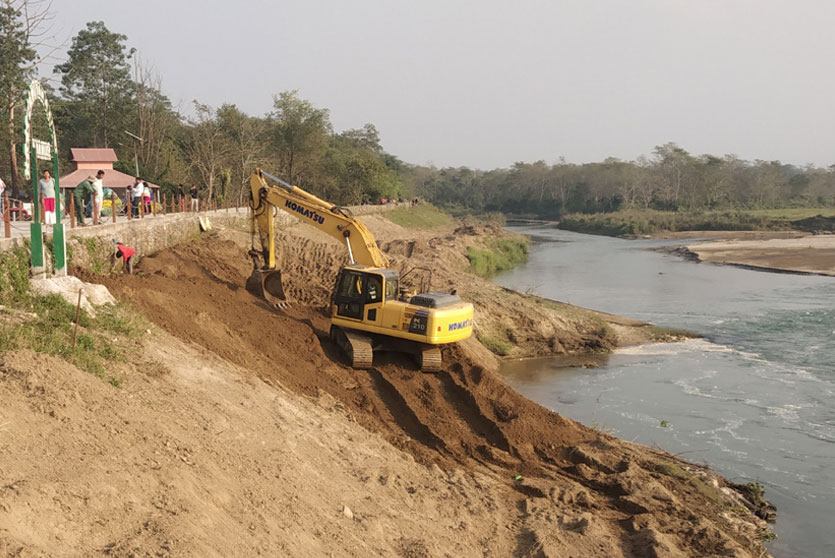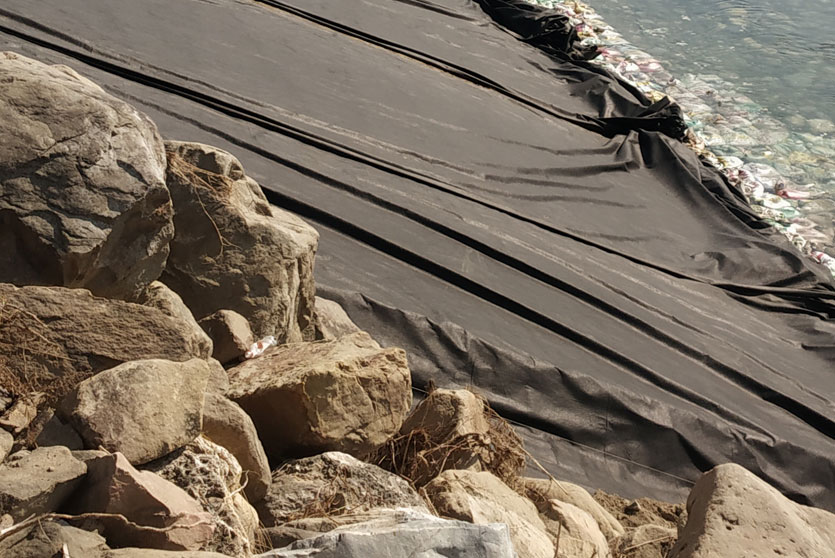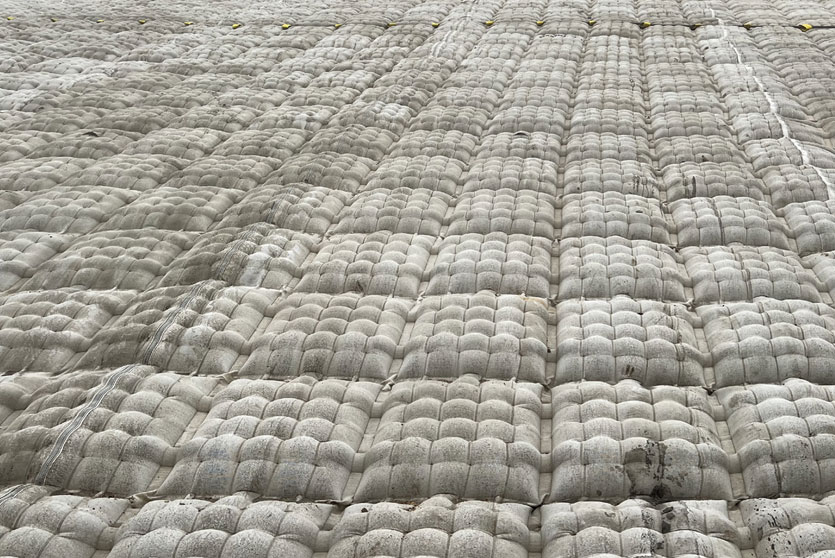River Embankment Protection using TechRevetment® (fabric form concrete mattress) at Sauraha, Nepal
Project Details
OWNER
Water Resources Research and Development Centre
SYSTEM
TechRevetment® System
DESIGNER
Geoquest India (formerly known as Reinforced Earth India Pvt. Ltd.)
AREA OF THE STRUCTURE
7511sqm
CONSTRUCTION
23 days (8th to 30th December 2022)

Background
The project is located near Chitwan National Park, Sauraha, Nepal over East Rapti River, A prestigious and famous tourist destination. At the confluence of East Rapti River and its tributary, the right embankment of east Rapti river is susceptible to erosion. For the development of the area and protecting it from overtopping of flow, the owner had earlier protected the right bank by using gabion mattresses and small submerged spurs. East Rapti river carries a lot of sediment with itself during monsoon season. Due to which river changes its direction frequently. The earlier path of the river is towards the left embankment and its main channel has been shifted towards the right side. The silt has been deposited in the center and formed an island. Hence the velocity has been increased towards the right hand side embankment. Consequently, erosion took place on the right-hand side and spurs have been damaged. After going through the site details, river bank embankment protection using TechRevetment® was proposed by Terre Armée.

Challenge
The key challenges of the project were:
- Underwater installation during monsoon
- Presence of crocodile near the work area
- Installation over existing damaged spur
- No construction zone, as it falls under the territory of Chitwan national park

Solution
Geoquest India, therefore, proposed TechRevetment® (Grout filled concrete revetment mattress) as embankment protection with a slope of 1:2.
TechRevetment® Articulation Block (AB) mattress with bi-directional cables was installed in the apron area and uni directional cables was installed on the slope surface up to top of the embankment level. TerraAnchors of 3m length and minimum 2MT capacity were used as an anchorage system.
